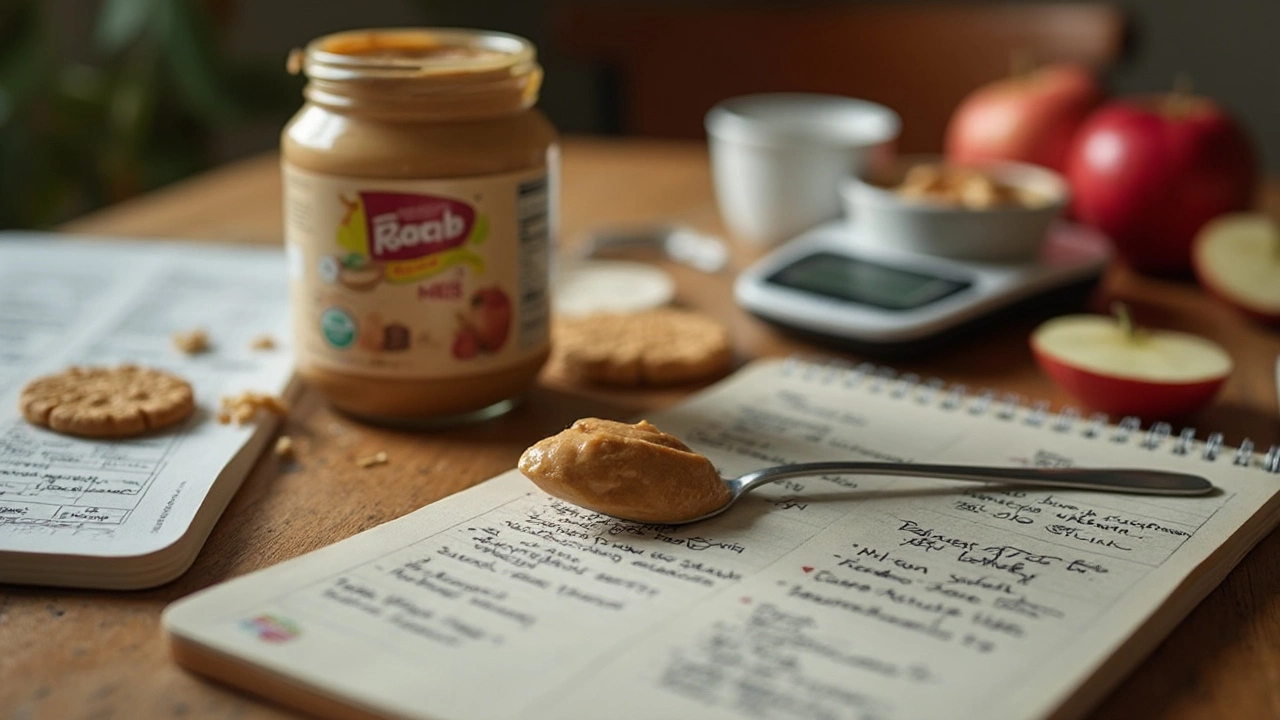Peanut butter gets a lot of mixed press. Some people say it’s too fatty for anyone serious about losing weight, others swear it’s a go-to for staying satisfied on fewer calories. But here’s a basic fact: peanut butter isn’t some magic bullet, but it’s not a villain either. It’s packed with a mix of protein, healthy fats, and fiber, which is pretty awesome when you’re trying to stay full and curb cravings.
Before you write it off for being “too high in calories,” let’s cut through the noise. If you watch your portions, peanut butter can actually help you stick to a healthy eating plan—mostly because it keeps you feeling full and happy. Nobody likes being hungry all the time, right?
If you’re looking for ways to drop a few pounds without feeling like you’re on a rabbit-food diet, understanding how peanut butter fits in is actually pretty practical. It’s all about what you pair it with, how much you eat, and making sure you’re getting the real deal (none of those sugar-loaded jars dressed up as “health food”).
- What’s Really In Peanut Butter?
- Peanut Butter and Your Diet: Helpful or Hype?
- How Much Is Too Much?
- Smart Ways to Eat Peanut Butter for Weight Loss
- Common Mistakes People Make (And How to Avoid Them)
What’s Really In Peanut Butter?
Let’s get real about what’s inside that jar of peanut butter you keep reaching for. At its core, classic peanut butter is just roasted peanuts ground up until they get creamy. That’s it – or at least, that’s how it should be. Some brands sneak in stuff like added sugar, salt, or unhealthy oils to boost flavor or shelf life, but these extras aren’t doing you any favors if you’re watching your weight.
Here’s what you actually get from a two-tablespoon serving (about 32 grams) of most natural peanut butter:
| Nutrient | Amount |
|---|---|
| Calories | 190-200 |
| Protein | 7g |
| Total Fat | 16g (mostly unsaturated) |
| Carbs | 6g |
| Fiber | 2g |
| Sugar | 1-2g (less in natural, more in processed) |
Now, the fat content looks pretty high, but before you freak out, it’s mostly healthy fat—what your body actually needs to keep hormones in check and help absorb certain vitamins. The protein? That helps you feel fuller, longer. And don’t ignore the fiber, even if it doesn’t look like much—every little bit adds up, especially when you’re trying to keep cravings in check.
If you check the ingredient label and it’s just peanuts (maybe a pinch of salt), you’re set. Watch out for brands that add palm oil or a bunch of sugar—they bump up calories and mess with the health payoff. Pure, natural peanut butter fits right in with healthy eating, especially if you’re looking for foods that fill you up without a ton of extras.
Peanut Butter and Your Diet: Helpful or Hype?
When it comes to peanut butter, most folks think it’s a total calorie bomb. But here’s what matters: peanut butter is made up mostly of unsaturated fat—the kind linked to better heart health and steadier energy. In basic terms, it fills you up for longer than white bread or low-fat crackers ever could.
One big perk of peanut butter is its protein punch. Just two tablespoons packs in around 8 grams of protein and about 2 grams of fiber. A quick look at the numbers for classic peanut butter:
| Serving Size | Calories | Protein | Total Fat | Fiber |
|---|---|---|---|---|
| 2 tbsp (32g) | 190 | 8g | 16g | 2g |
Sounds heavy, but here’s the thing: those fats and proteins actually send signals to your brain saying “Hey, I’m full.” That helps you avoid mindless snacking on chips or cookies later.
Not all peanut butters are created equal, though. Watch out for jars that are loaded with extra sugar and palm oil. The best picks have just peanuts and maybe a pinch of salt. That way you’re not getting mystery ingredients or a sugar rush that sends your appetite on a rollercoaster.
If you stick with a measured portion, peanut butter can totally work in your favor on a weight loss diet. Pair it with stuff like carrot sticks, apple slices, or whole grain toast. You’ll get flavor, texture, and that ‘satisfied’ feeling—way better than gnawing on dry rice cakes or feeling hangry by 3 p.m.

How Much Is Too Much?
Here’s the thing with peanut butter: it’s easy to go overboard, especially when you dig in with a big spoon. Just two tablespoons have about 190 calories, 16 grams of fat, and 7 grams of protein. For most people, that’s a decent serving—enough to give you a protein and flavor boost without wrecking your calorie budget.
Portion control is super important if you’re eating peanut butter for weight loss. Most folks don’t realize how small two tablespoons actually are. It’s about the size of a ping pong ball, not a heaping scoop. Grab a measuring spoon the first few times you serve it out—it honestly makes a difference.
Check out how a standard two-tablespoon serving stacks up:
| Amount | Calories | Fat (g) | Protein (g) | Carbs (g) |
|---|---|---|---|---|
| 2 tbsp | 190 | 16 | 7 | 7 |
If you’re active, you might get away with an extra spoonful. But if your main goal is weight loss, it’s smart to stick to one or two tablespoons per day. Remember, the calories can add up quick, especially if you spread it thick on toast, toss it in smoothies, or keep dipping apples without thinking. Little extras really sneak up fast.
Here’s a quick tip: if you keep grabbing the jar for just-one-more-bite, try pre-portioning a few containers for the week. That way, you won’t end up eating half a jar without noticing.
Smart Ways to Eat Peanut Butter for Weight Loss
Alright, so if you’re set on working peanut butter into your weight loss routine, here’s the real talk: it’s all about how you use it. No need to ditch it completely—just get a little smarter about the portions and pairings.
First, always eyeball the serving size. One tablespoon of peanut butter packs about 90-100 calories. That’s not much on its own, but a couple of “oops” spoonfuls add up fast. Grab a measuring spoon and keep it honest—don’t just guess.
Now for the tasty part. Peanut butter is super filling because of its balance of fat and protein, but if you smear it on white bread or dunk cookies in it, you’re kinda missing the point. Try these easy, healthier combos instead:
- Spread a tablespoon on apple slices for a sweet-and-salty snack that actually keeps you full.
- Dip celery or carrot sticks for a crunchy, low-calorie fix that’s loaded with fiber.
- Mix a spoonful into overnight oats with berries—simple, filling, and won’t spike your blood sugar like sweet cereals.
- Toss it in a smoothie with a banana and a handful of spinach—makes things creamy without extra sugar.
Go for plain, natural peanut butter with no added sugar or palm oil. Skipping those sneaky extras saves you hidden calories and keeps your snack healthy.
Check out this quick calorie guide to see how it stacks up in common snacks:
| Snack Combo | Calories (est.) |
|---|---|
| 1 tbsp PB + apple | ~150 |
| 1 tbsp PB + celery sticks | ~120 |
| 2 tbsp PB + 1 slice whole-wheat toast | ~230 |
| 1 tbsp PB stirred into oatmeal | ~180 |
Final tip: keep your snacks balanced. If peanut butter is your main protein for the afternoon, skip the other fatty add-ons. The idea is to use peanut butter as your healthy fat and protein source, not just pile it on top of everything else.

Common Mistakes People Make (And How to Avoid Them)
Folks often think slapping a spoonful (or three) of peanut butter on just about anything is a shortcut to healthy eating. The thing is, there are a few easy mistakes that can throw off your weight loss plan.
- Going Overboard with Portion Size: A serving of peanut butter is just two tablespoons, which clocks in at around 190 calories. It’s super easy to double that if you’re not careful. Grabbing a regular spoon and eyeballing it often means you’re eating way more than you think.
- Picking Sugar-Loaded Jars: Some brands pile on extra sugar and oils—look at the label. You’ll be shocked how many "natural" varieties sneak in ingredients that really mess with your nutrition goals.
- Pairing with Carb Bombs: Peanut butter spread thick on white bread, crackers, or pancakes turns a healthy food into a calorie bomb. The point is to balance protein, healthy fats, and carbs, not just stack them up without thinking it through.
- Mindless Snacking: Peanut butter is tasty, so it’s super easy to eat straight from the jar. A spoon here, a dip there, and suddenly you’ve had 400 extra calories and barely noticed.
If you want to avoid these classic peanut butter traps, here’s how to stay on track:
- Always measure it out. Use a real tablespoon, not your coffee spoon.
- Go for jars with just peanuts (and maybe a pinch of salt)—skip anything with added sugar, palm oil, or weird extras.
- Pair peanut butter with fruits or veggies, like celery sticks or apple slices. It gives you fiber and cuts down on empty calories.
- Watch when you eat it—spreading two tablespoons on morning toast or using it for an afternoon snack is a lot different than snacking all night with a jar and a spoon.
One cool stat: A Harvard survey found that people who added nuts or nut butters to their diet—not too much, just a little every day—tended to gain less weight over four years compared to folks who skipped them. The key is portion control and clean ingredients. Keep that in mind and peanut butter can actually support your weight loss plans instead of wrecking them.

